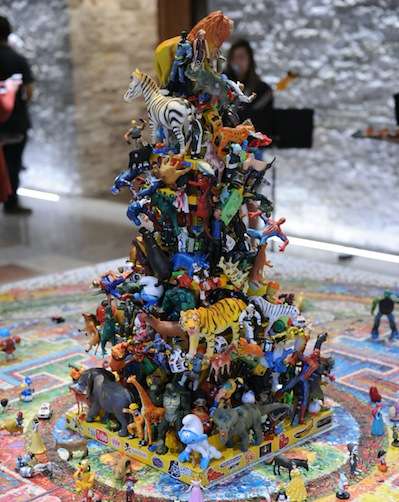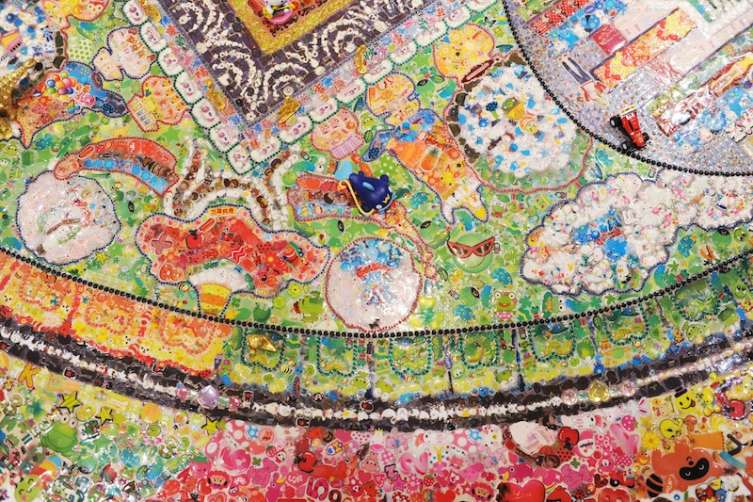Art Lexing Installs Ye Hongxing at EAST Miami

Swire’s Chinese and Hong Kong properties are famous for integrating contemporary art into design. So it’s no surprise that they have tapped Miami’s Chinese art specialist, Art Lexing, to present an interactive installation by female Chinese artist Ye Hongxing at their first U.S. hotel, EAST, Miami.
The name of the piece is “Prajñāpāramitā”, which means the perfection of transcendent wisdom, and it will be on view through December 15, 2016 and serve as their artistic centerpiece for Miami Art Week a.k.a. Art Basel. If you’re a regular art fair-goer, you may recognize the acclaimed artist’s work by the colorful, puffy-sticker heavy, mixed media works.
Ye Hongxing’s Prajñāpāramitā” features an intricate design that re-works the traditional ‘Mandala’ symbol and renders it in three-dimensions. A frequent motif in Hongxing’s epic paintings, this installation consists of her signature material—thousands of children’s stickers. The effect is kaleidoscopic and dazzling and the piece shimmers and glitters in front of the viewer.
Hongxing is a trained classical painter who uses her skill in color, perspective and shading with these fun puffy stickers and colorful, pop objects. The sheer volume of the stickers is also a comment on the disposable nature of contemporary culture and the overload of information that we are presented with on a daily basis.
The title of the piece ‘Prajñāpāramitā’ is a central concept in Buddhism. The pagoda refers to the road to enlightenment – your life is your road and Prajñāpāramitā urges you to transcend beyond impermanent illusions and the preconceived ideas you have been conditioned with, urging you to find your own true path. Audience are encouraged to place toys on the surface of Mandala based on their own interpretation.
At the centre of the Mandala is a pagoda cascading with children’s toys. Pagodas were originally designed to house sacred Buddhist relics and writings – Hongxing’s toys are perhaps the relics of a more innocent time. Hongxing’s practice is a comment on the rapidly changing landscape of Asia – financially, technologically, culturally and environmentally. The paradox of constructing this spiritual emblem from secular children’s toys and stickers is vividly communicated. The stickers are deftly applied with labour-intensive skill, adhering to the rhythmic concentric circles of the Mandala, and Hongxing’s message is propelled to the fore. If these modern advancements continue at such a rate – what will happen to the traditions and cultures of society? What will happen to spirituality and innocence? Perhaps you will find answers peering deeply into the mandela putting your mind “at EAST.”














